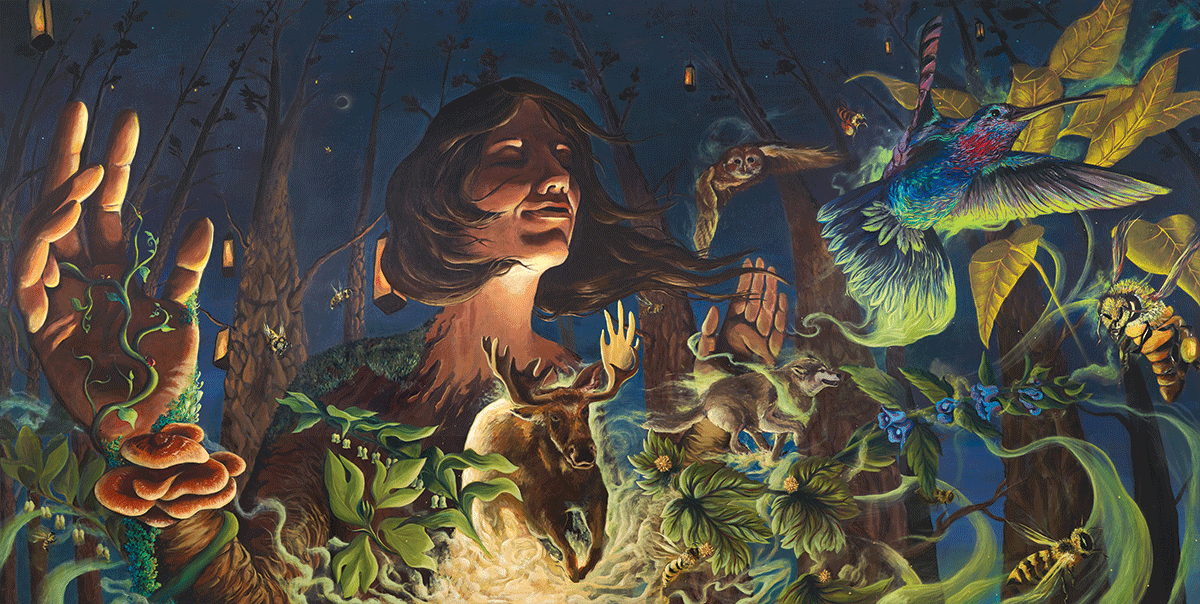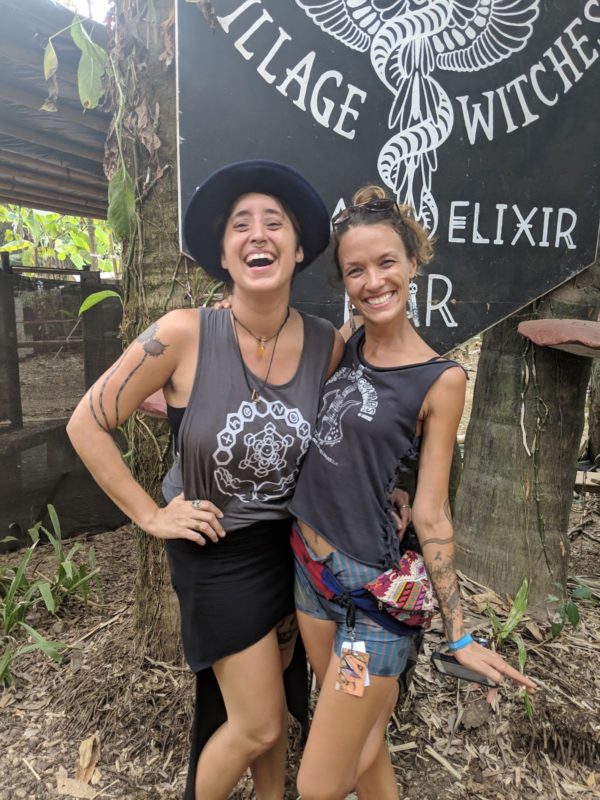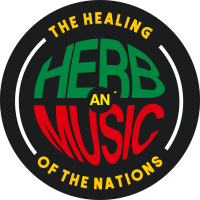17 Sep We Are All Connected | Supply Chain, Choice and Change

“Nature’s Release” – Annie Kyla Bee, Jack Henry and Dillon Endico
“Bringing your body and mind into balance only happens when we are in balance with the natural rhythm of our Mother Earth, putting your energy where your mouth is and where your head rests”
We Are All Connected: Supply Chain, Choice and Change
by: Jill TrAshley – The NOHM Co. & Sarah Wu – Village Witch
As we approach the autumnal equinox, we have the opportunity to celebrate the change of seasons, as well as the conscious and subconscious changes within. This solar position energetically influences and brings to light the theme of equality. Equality, in its essence, suggests fairness, justice and doing “what is right.” While the meaning may differ – depending on cultural systems of food, media, politics, social norms, religion and philosophy – what is right boils down to a collective response, informed by the choices we make every day, both voluntarily and involuntarily.
This world is completely interconnected, the air you breathe and the water you drink is influenced by the conditions of the soil beneath your feet, impacting the food you eat. The methods of transportation from the field or garden to your plate, factory processing and packaging, the people who grow it and the earth it is grown on, all of these elements effect the vitality of the food you eat. We refer to this journey as the Supply Chain.
The question posed: how can we make conscious choices that positively affect another life, reducing negative impact on people and planet? Let’s talk solutions to find ways we can lighten the load, not only for our mother earth but also her inhabitants.
Let’s explore interconnected links that provide the consumer the consumable. Now don’t get yourself worked up about being a consumer because involuntarily you are consuming, as I write and as you read. Pause for a moment and take a deep breath, feel your chest fill with life giving oxygen, your heart beating in your chest, your kidneys processing the minute droplets of water, your living body interacting with the living Earth. Involuntarily you consume every second of every day, you can not change that; yet voluntarily, you consume in other ways. You are consuming information and opinions at this moment, perhaps you are sipping tea or having lunch, you may have another tab on your device open to that much coveted item of clothing, a new book, that yummy recipe.
Let’s talk change.
Each morning, we wake up a new person, cells have died, new ones have formed, we have digested the previous day, our bodies evacuate waste, we have a new opportunity to live our lives. This natural flow is called the Circadian Rhythm, the rising and falling tides of hormones, emotions, mental activity, physical stamina and metabolic processes influenced by light. When we get to know the effects of the external world, both natural and human constructed, we understand how they influence patterns of sleep, diet and energy. Then we can work with these processes to optimize our day-to-day, keeping us in a gentle homeodynamic balance.
Shedding a little light.
When the sun goes down, our pineal gland produces the hormone melatonin, which makes us become drowsy. Our species has co-evolved with fire, when the darkness came the fires were lit, the ambient light kept our bodies warm and our stories alive. Today, we sleep to screens, we wake to screens and over 30% of adults in the United States suffer from sleep disorders, most prevalent in major cities and their concentrated light pollution. High rates of sleeplessness also plague Alaskans, where the sun doesn’t completely set for about 82 days of the year. If our bodies are regulated by light, what do we do when so much of it is artificial?
The simple formula for encouraging sleep doesn’t come in a pill, nor in an amber tincture bottle, not even in a cup of tea. The simple answer is limiting the amount of screen time after dark, adjusting your devices for the warm nighttime setting, and even, gasp… turning off your devices all together! On top of that, turning down your lights, or even better, lighting candles. Go back to how we lived just over a century ago and how we evolved over 300,000 years. For you night owls and late workers, invest in a cozy sleep mask or some blackout curtains, take an hour before bed to be with a candle.
If you are interested in herbs, think deeper than just sleep aids like hops or valerian root, consider nourishing your adrenal glands, those little organs that sit just on top of our kidneys and regulate our stress hormones. Allow them to take a break, and you will rest deeper. Some favorite regenerative adrenal tonics that seem to be suited for most people are tulsi aka holy basil, reishi mushroom, and licorice. These medicines are most effective when taken long term, so daily consumption is required.
Daaaaang… they got rhythm… seasonal rhythm that is.
The movement of the sun affects us seasonally as well, especially those of us who live just above or below the equator. For tropical folks used to the sun setting at 6pm, they’re in bed by 9, up with the roosters at 5, with only an hour shift from solstice to solstice. But those reading this, the majority probably in northern temperate bioregions, are experiencing the shortening of days, preparing for winter nights and daylight savings.
Like us, the plants change with the seasons. Historically, our fresh sun-kissed fruits and veggies were jarred up, frozen and dried, our roots went in the cellar, our seeds got carefully saved for spring. North Americans now live on imported food, shipped from countries below the equator where winter is summer. Or from the unique Meditteranean climate of California, where a large portion of the produce in the United States comes from. Either way, we no longer eat with the seasons. We eat watermelon in winter and apples in the summer, few know what is even seasonal anymore when our groceries seem to contain it all. In the 915 million acres of farmland in the United States, around 60% is dedicated to growing corn and soy for feeding the world’s livestock, and for producing cheap packaged snacks. We only grow food on 2% of the arable land! So of course we are dependent on imports.
One of the most radical things you can do as a consumer is redirect to your local farmer’s markets, and shift your diet to seasonal foods. This takes considerable focus, intention, dedication and a redirection of your shopping habits. Thankfully, more and more people are showing up and dishing out healthy, affordable, locally grown foods. In many cities and small towns across the continent, we have food deserts, with not a single fresh item to be seen. People often think of organic food as only for the middle and upper classes.
We are dedicated to changing this! More and more, we find farming cooperatives, food coops, Community Sponsored Agriculture (CSA), urban and suburban gardens, and farmers markets have begun to even take food stamps. Change is upon us! What does it look like to eat seasonally? In many bioregions, we can still get fresh greens long into winter, beet greens and arugula too. Pretty much all the brassicaceae: broccoli, cauliflower, brussel sprouts, mustard greens, collard greens and kale. Get your dose of Vitamin C with lentil and mung bean sprouts. Don’t be afraid to eat squash and root veggies for a few months, these provide rich nutrients and have a warming energy to keep our bodies healthy through the long winter.
Seasons of Change
Bringing your body and mind into balance only happens when we are in balance with the natural rhythm of our Mother Earth, putting your energy where your mouth is and where your head rests. No matter where you come from, or the weight of your wallet, you do have choices. To participate in the local economy, or the global one. To direct your attention to the screen, or to a human before you. Know that you have the power to create a more just economy, a gentler version of yourself, and the support to seek the resources that are closest and most accessible to you. Day to day, we exercise our vote with our choices and with our dollar.

Jill TrAshley www.thenohm.com & Sarah Wu www.villagewitch.org
Resources:
https://www.ams.usda.gov/local-food-directories/farmersmarkets
https://farmersmarketcoalition.org/submission/online-database/
https://www.feedingamerica.org/find-your-local-foodbank
https://www.foodpantries.org
https://whyhunger.org/find-food/
http://www.coopdirectory.org
https://foodforchange.coop/cooperative-organizations/
https://www.seedsnow.com/blogs/news/fall-and-winter-crops
